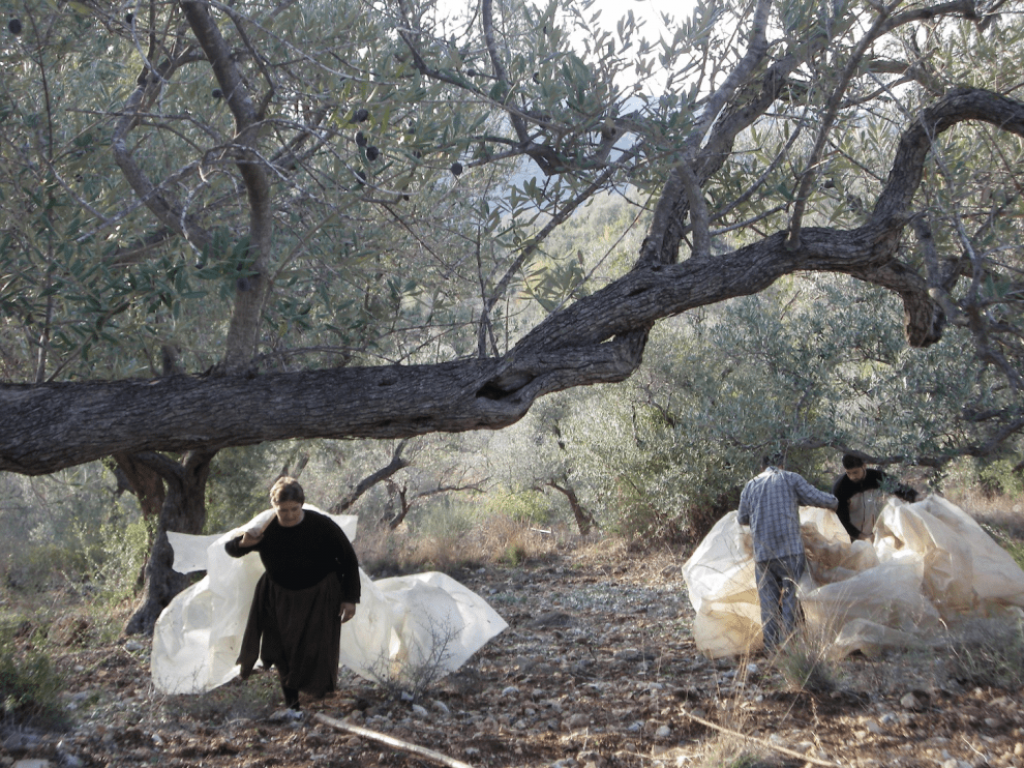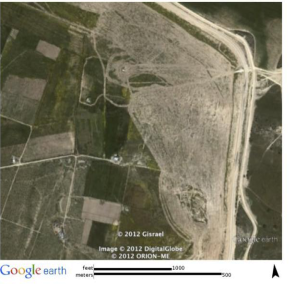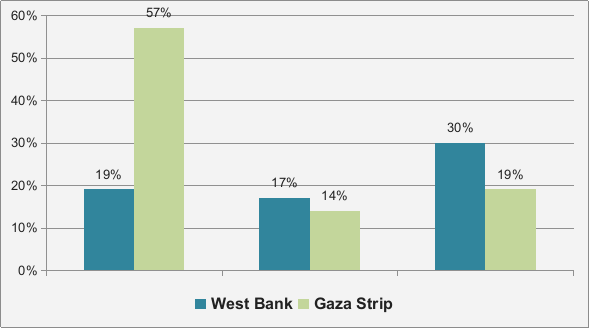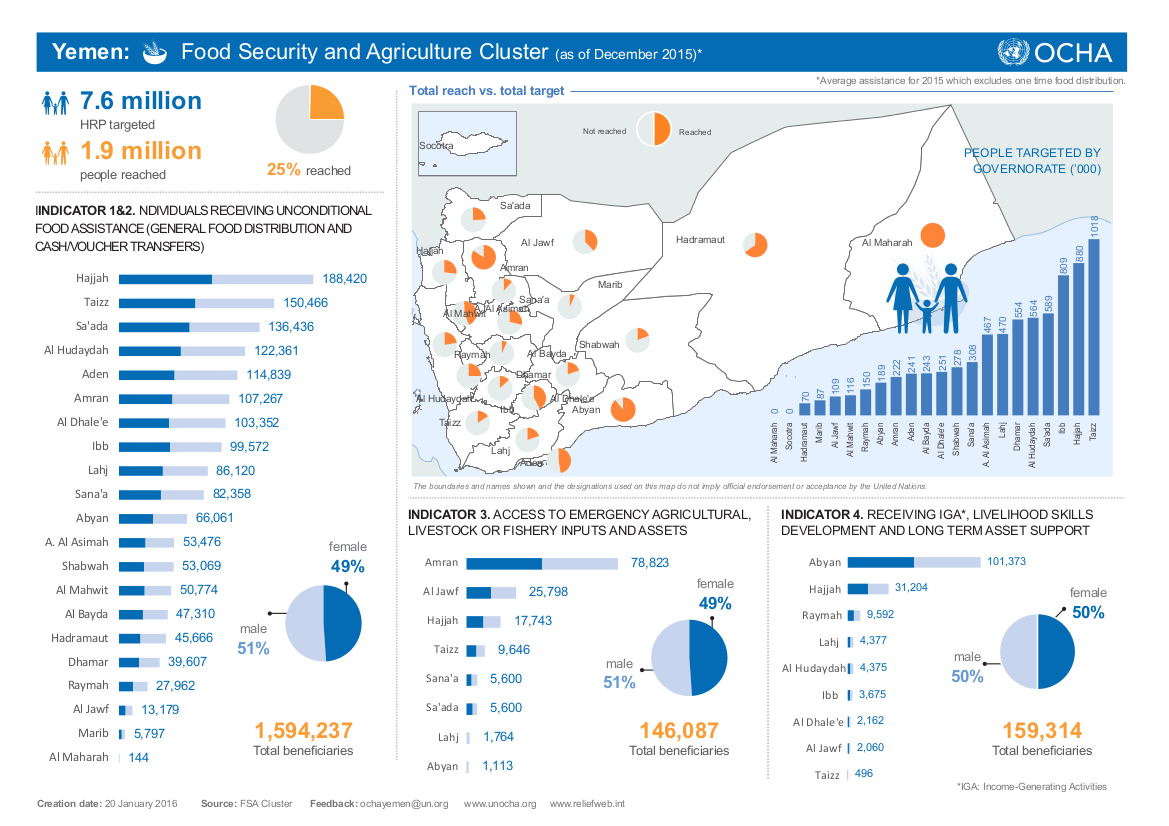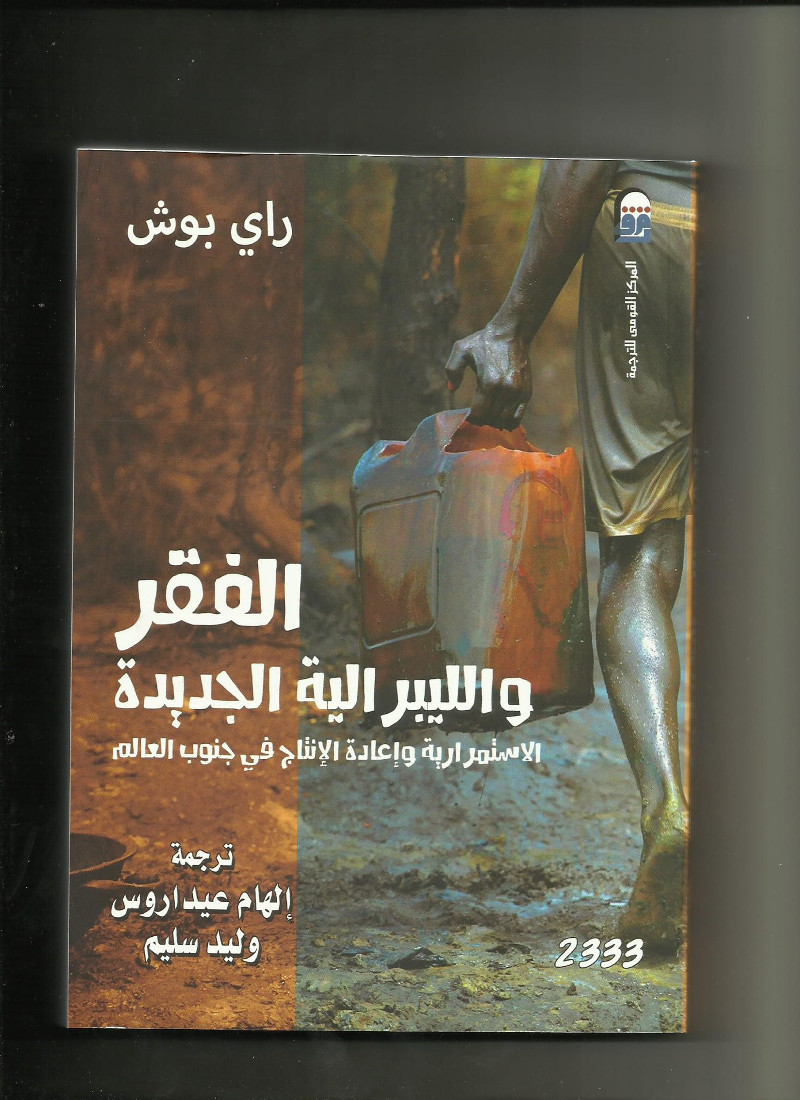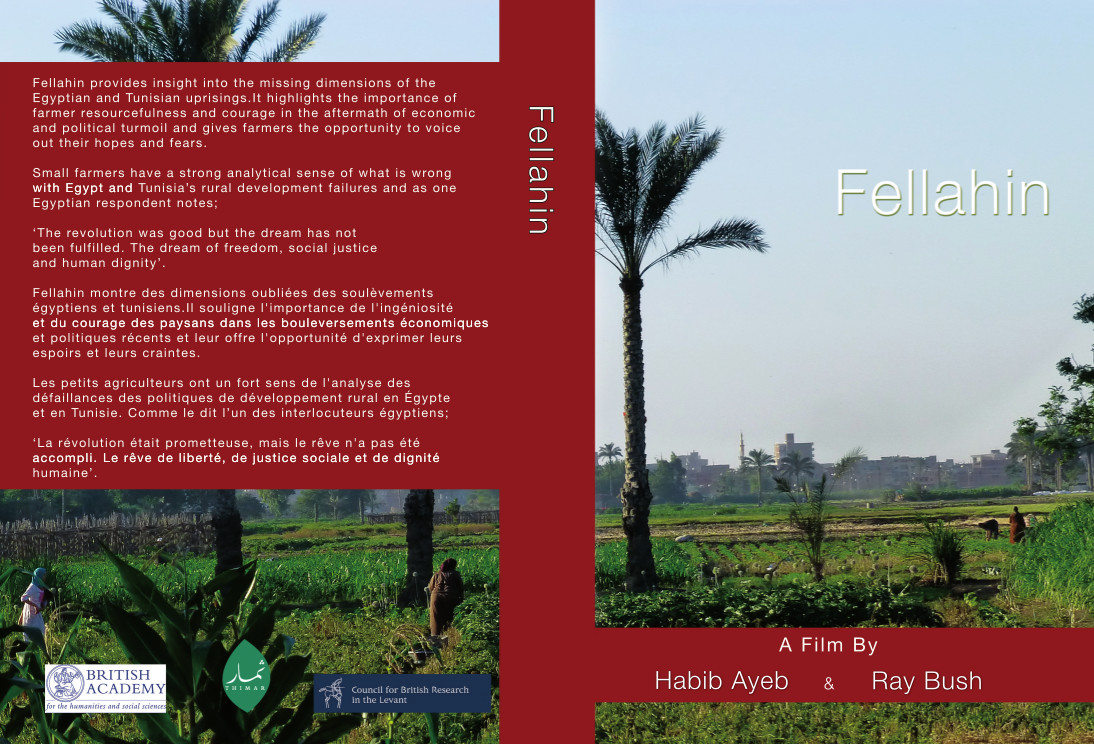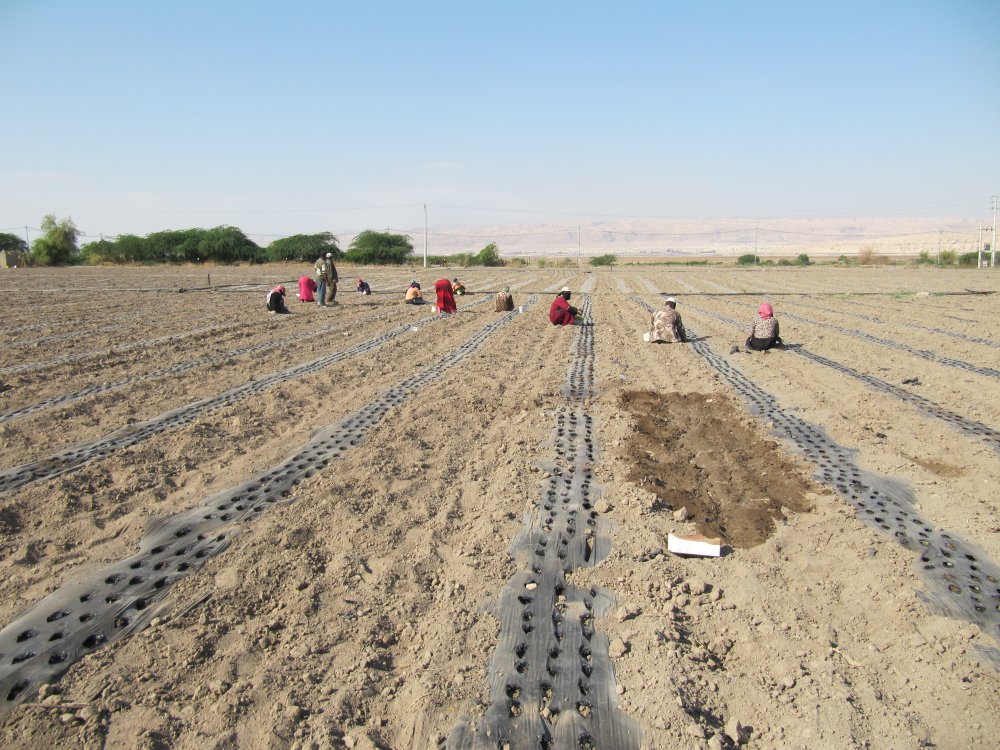New Contradictions in India’s Agrarian Economy Following Economic Reforms and Trade Liberalization
Following Independence from colonial rule in 1947, the nature of the principal contradiction in the agrarian economy in India was fairly clear. The principal contradiction was that between the mass of the working peasantry and labourers on the one hand, and on the other hand the minority of landlords, traders and money lenders who monopolized control over land and money-capital, thereby exploiting the peasantry through rent, interest and exorbitant traders’ margins. This contradiction had indeed been present earlier too and had been part of the general contradiction between the Indian people as a whole and imperialism; but in the post-Independence period it came to the fore and determined the immediate agenda of the democratic struggle.
The principal contradiction was no longer as earlier, that between the Indian people as a whole, and imperialism and its local comprador allies. While imperialism was by no means dead, it was on the retreat in the context of the Post-War shambles that was the advanced world, and de-colonization allowed space for third world countries like India to try to de-link from the earlier international division of labour under which they had been completely open and liberalized economies geared to metropolitan growth, not national growth. They could now protect their economies and undertake state intervention in the interests of national development- in which they were helped by the existence and aid of the socialist camp. The old liberalizers were silenced; the new liberalizers had not yet appeared.
In the agrarian sphere in India the resolution of this principal contradiction, namely that between the landlords, those monopolizing money-capital on the one side, and the mass of the peasantry on the other, was tied up closely with the solution of a number of other important secondary economic and social contradictions. The principal contradiction implied that the need of the times was to break land monopoly by measures of effectively re-distributing land from the landlords to the land-poor and landless, to break the monopoly of credit and marketing through co-operative institutions for channelizing credit to the credit-starved and setting up non-profit marketing institutions between producer and consumer with the aim of stabilizing prices for both. It was essential that the principal contradiction should be tackled boldly in order to resolve the other important and related contradictions.
The other important, related contradictions whose resolution depended on how the principal contradiction was dealt with, were many. There was the contradiction between the paucity of productive investment and hence the low level of productive forces in agriculture on the one hand - not because economic surplus was inadequate but because it was used unproductively - and the imperative need to increase the total grain output for feeding the rural population itself at higher levels, and at the same time to increase the commoditized portion of grain needed as wage-goods for the new industrial thrust, on the other. There was the contradiction between the deep poverty and low standards of material life in the villages on the one hand, and the need to expand the internal mass market to make industrial expansion and overall development self-sustaining on the other, which was only possible through measures increasing mass purchasing power. There was the contradiction between the continuing caste, class, gender and other social types of oppression in a particularly intense form in rural areas on the one hand, and the very constitutional basis of the Indian polity which considered every citizen to be equal and to have equal opportunities regardless of caste, class and gender. The moment we spell out these contradictions, we can see the multifarious links between the principal and other contradictions, between the agrarian question and a development path free of imperialist pressures.
The economists and planners in India however have consistently underestimated the role of effective re-distributive land reforms for breaking the economic and social power of the rural landed minority, thereby widening the social base of rural investment. They underestimated its importance for laying the precondition for measures of mass poverty reduction and for providing an expanding market for industry, and for reducing the old class, caste and gender based forms of inequalities which express themselves in high levels of illiteracy, declining sex-ratios, atrocities against dalits, and the persistence of child labour. Only in some states where the Left movement has been influential were some measures of land reform undertaken, with a very positive impact despite their relatively limited nature.
While the achievements of forty years of planned development in India up to 1990 were in many ways substantial, there have been disappointing failures as well. These lay in the inability to substantially reduce mass poverty; therefore an insufficient growth of the internal mass market and hence the emergence of pressure to seek external sources of growth in collaboration with foreign capital. International developments after the 1970s leading to the re-emergence of the dominance of finance capital in the advanced world from the mid-seventies, the relative political unity achieved by the national bases of this finance capital (by subordinating inter-imperialist rivalry, to common aims vis a vis the third world), the aggressive use by finance capital of the Bretton Woods Institutions (BWI) for implementing its aims, and the collapse of the Soviet Union, together led to a highly favourable conjuncture for imperialism, which has sought to economically re-colonize the third world and has substantially succeeded in many smaller countries.
The new liberalizers arrived on the scene in Latin America and Africa in the late 1960s and 1970s; while their attack in India started a little later, from the early 1990s. The old imperialism was transparent because there was direct political control, while the new imperialism is less transparent and therefore in many ways, more dangerous. The new liberalization differs from the old colonial liberalization in at least two respects: it has a strategy of improving further the economic position of the rich at the expense of their fellow-citizens, which has materially corrupted the elites of the countries of the global South; and it has an ideological thrust in terms of wrong theories, which has intellectually suborned the same public figures and intellectuals who were earlier supporters of independent growth, but who now parrot the mantra of liberalization they have memorized from their advanced country mentors.
There were positive aspects of the Nehruvian dirigiste policy regime in India during the four decades from 1950 to 1990, that we now appreciate more than before, as the iniquitous nature of later economic reform policies have become evident. Before Independence in 1947, Britain had an iron grip on our internal finances and on external earnings – for the best part of two centuries, the gold and foreign exchange earnings from India’s global merchandise export surplus were entirely appropriated by Britain. The producers, the peasants were never actually paid because they were reimbursed for their exported goods out of their own taxes contributed to the budget revenues. Such financial trickery meant that surplus budgets were being operated putting a severe squeeze on mass incomes, and growing poverty resulted. It was reflected in the sharp decline in British India of annual food grains consumption per head of population, from nearly 200 kg (five year average during 1909 to 1914) to 159 kg (average for 1933 to1938) reaching a nadir of 137 kg by 1946. In rural Bengal, 3 million civilians comprising labourers, artisans and poor peasants died of starvation because the huge cost of financing the Allies’ war spending in South Asia had been charged to the Indian budget (against a promise only of repayment in the distant future), and these funds had been raised through a deliberate, rapid profit inflation.
At Independence the country was left in dire straits, yet with great hope, for the onerous burden of colonial exploitation was removed for good. The government started spending for rural infrastructural development especially on irrigation on a fairly large scale and also funded research institutions for developing new crop varieties. It gave high priority to reviving basic grain production and consumption, and put in place measures to protect both consumers and producers from the wild price fluctuations that mark volatile global markets. Food grains were not allowed to be exported even if global price was high as long as domestic needs were not satisfied, and grain could not be imported if global price became abnormally low as this would undercut farmers’ incomes. The Food Corporation of India was set up in 1965; it undertook to purchase grain without limit from farmers at a minimum support price covering cost of production and giving some income to farmers. It held stocks of food grains, adding to it in years of good harvests and drawing down stocks in bad output years. This system evened out price fluctuations and was a balancing act to both protect the consumer and the producer.
The system of public procurement of food grains, maintaining stocks and distributing to consumers, was aided by the green revolution that led to a thirty times higher growth rate of output compared to the colonial period. By the late 1980s the government agency was dealing with about 45 percent of the total marketed grain output. Food grains availability for the population improved to 184 kg per head by the early 1990s. Price stabilization measures were also extended to farmers producing and exporting cotton, tea, coffee and spices by the setting up of Commodity Boards that similarly purchased a quarter to a third of output at minimum support prices.
Credit had always been a problem for the peasantry that was subjected to usurious rates from private moneylenders. After bank nationalization in 1969, small scale producers including the whole of agriculture and small manufacturing was defined as a ‘priority sector’ for bank lending and credit was extended to it at a lower interest rate. The reach of banking to rural areas improved.
Reversal of Policies from the early 1990s
The temporary foreign exchange shortage that India experienced during the first Gulf War of 1991 was made the excuse by the international financial institutions to say that India was facing a severe financial crisis, which was far from the truth. Where a small loan would have sufficed India took a $5 billion loan from the IMF. Without any warning or consultation in Parliament the Finance Minister of the minority government elected in mid-1991 quickly reversed all policies followed earlier and put in place a set of familiar structural adjustment measures advised by the IMF. Public spending was cut sharply (to the extent that per capita income of the population declined in 1992) and the rupee was devalued by 30 percent. Two years later financial liberalization measures were taken that excluded the peasantry and other small producers from low cost bank credit.
Even after the repayment of the IMF loan the decline of public spending especially on rural development and the social sectors continued as a part of the new economic theology. From 1995 after the formation of the World Trade Organization, India was subjected to and succumbed to strong pressure by advanced countries to do away with its quantitative restrictions on trade and to lower tariffs, much earlier and faster than was required under the Agreement on Agriculture to which it was a signatory. As a result, farmers and other small producers were exposed to the high volatility of global prices for the first time in four decades. At the same time the purchase function of the various commodity boards was abolished, so the protection of minimum support prices for the important exported crops was taken away from producers.
On the food security front, targeting was introduced in the public distribution system, namely instead of ration cards being the right of every person applying for one, only those determined by the government to be ‘below poverty line’ were to be eligible for subsidized grain. Since the official poverty line was unrealistically low this led to the exclusion of the bulk of the actually poor, and sales from ration shops dropped sharply. Public procurement was run down on the grounds that too much grain was being purchased by the government agencies and stocks were building up – ignoring the fact that it was the attack on the incomes of the people through public expenditure cuts, combined with targeting, namely excluding the actually poor from affordable food, that was causing the build-up of stocks. It was not over-supply, but deficiency of mass demand created by state policy under neo-liberalism.
As in other developing countries in India too there has been a severe impact of neo-liberal austerity and free trade, but perhaps even more severe than elsewhere owing to the extreme and thoughtless nature of the misguided measures adopted. One indication is that grain consumption per head of population started falling steeply just as had happened in the colonial period, and the gains of the preceding 40 years of Nehruvian policy were soon reversed. At present according to the latest data the per capita food grains availability is back to the level of the late 1930s, namely below 160 kg per head for direct consumption. Since food grains supply the bulk of nutrition for the average Indian, with the decline of grain consumption the National Sample Survey data show a slow but significant decline in both the per capita energy intake measured in calories per day, and in per capita protein intake, as compared with the early 1990s. The proportion of persons in poverty, as correctly measured by applying the official nutrition norm to arrive at realistic poverty lines, therefore shows a significant rise over two decades, comparing the 1993-94 with the latest 2011-12 data.
A crisis of peasant indebtedness resulted by the late 1990s from removal of price support, exposure to the sharp ups and downs of global prices and exclusion from cheap credit. The crisis continues with an average of around 15 to 16 thousand debt-driven farmer suicides per year, totaling over 300,000 since 1997. In no other country in the world do we see such extreme outcomes from following misguided neo-liberal policies. The complete callousness of the ruling elites is shown by their continuing to promote free trade and their refusal to implement effective price support. Rather at present the World Bank that advocates cash transfers to farmers in developing countries, on the model of advanced countries, is listened to by the rulers while a deaf ear is turned to farmers’ own repeated demand for price support. Why cash transfers are an impracticable measure for poor developing countries and merely serve advanced country interests, we will discuss later on in the context of the gigantic agricultural subsidies prevalent in Northern countries.
The data on land ownership in India show that a process of concentration has been going on comparing 1993 with 2013, with the top 5 percent gaining land at the expense of all other groups. The poor peasants have little land to lose and are not considered credit –worthy, It is the middle peasants and even rich peasants who have been losing land as agriculture became less profitable under neo-liberal policies. The top 5 percent of owners who have gained land from them are not confined to agricultural production but have diversified into urban property and enterprises of various kinds. They are able to weather price fluctuations in a way that the mainly agriculture-dependent producers cannot.
Apart from land transfers within the landowners, there has been a systematic attempt by the government of the individual states in India to facilitate corporate acquisition of crop-growing land against inadequate compensation, and for setting up Special Economic Zones. Farmer resistance to land acquisition has grown greatly in recent years but where organization and resistance is weak, land continues to be alienated from the cultivators by promising rehabilitation and compensation that does not always materialize. Owing to such land alienation the number of cultivators has been declining, but the displaced do not find adequate employment in other sectors of the economy owing to the slow expansion of the material production sectors and of domestic demand, under austere fiscal policies. We see an explosion of the tertiary or services sector characterized by low-productivity and low-paid wage work.
With these developments, in India the contradiction between the Indian people and the new imperialism is becoming intensified. In the agrarian sphere the emerging new contradiction is now between all the peasant classes in rural areas on the one hand, and imperialism with its local landed collaborators on the other hand. The earlier contradictions have to be seen now as expressing themselves in new and more intensified forms in the context of neo-imperialism and its assault on the economy.
If the Transnational Corporations (TNCs) co-opt the small landed elites into its strategy - as appears to be happening - then the struggle against imperialism and the struggle for land are no longer separate but they begin to converge. For example, both the TNCs and the local capitalist firms engaging in the new agro-business want a rolling back of the legislation on the land ceilings so that their enterprises can expand at the expense of the livelihood of the ordinary mass of farmers. This is where their interests converge with those of the elite landlords. All these groups engage in blatant land-grabbing and in private appropriation of common property resources. Many states in the country have already given exemption from existing limits on the conversion of agricultural land to non-agricultural uses.
At the national level the paramount question is whether there can be sufficient resistance to imperialism to salvage some degree of autonomy for following national development goals, or whether the long struggle for independence for which so many people worked so hard and sacrificed their lives, is to end in India being forced to suffer the punishing regime of austerity implying lowered real incomes, high unemployment, loss of its national assets, and loss of its food self-sufficiency, all to the benefit of international finance capital based in the advanced countries. Independence, or a financially dependent neo-colonial status: that is the question.
The cotton story: trade liberalization and farmer suicides
Under the new free trade policy described earlier, the fastest growing individual exportable crop was raw cotton which had seen a violent export thrust, with exports jumping from an average of 35,000 units during the four years before 1990-1 to more than ten times higher at 374,000 units in that year, and maintaining a high average of 200,00 units in the next three years. Owing to the sudden jump in exports there was a domestic raw cotton famine, open market yarn price trebled and large number of power looms closed down. The unregulated raw cotton export thrust meant that many thousands of handloom weavers using machine-made yarn, were also badly hit – debt induced suicides of handloom weavers took place long before farmer suicides. Cotton prices started falling globally from end-1995, despite this the Commerce Ministry gave the go-ahead to more exports in early 1997, resulting in the closure of an even large number of power loom enterprises. The competitiveness of the textile industry was reduced and India’s foreign competitors benefited.
Did the raw cotton export boom benefit farmers growing the crop? The majority of cotton farmers are small farmers and most take land partly or wholly on lease. The risk of producing a commercial crop is borne entirely by the grower, and this risk is greatly increased when the cash crop is grown on contract for export, according to the seed, fertilizer and pesticide regime prescribed by the purchaser. Hoping to improve their economic position during the period of rising global prices up to 1995, many hundreds of thousands of small farmers rapidly expanded the area sown to cotton, taking large cash advances from traders and commission agents and loans from banks to meet the extra seed and input costs. Both dealers in uncertified seed and in sub-standard pesticides had a field day under such boom conditions of rapid area expansion with no state supervision as everything was left to the allegedly ‘efficient’ market.
The cotton crop is susceptible to a large variety of pests and the unholy trinity of commission agent/moneylender, pesticide dealer and seed-supplier all had a role to play in the debacle, as farmers purchased uncertified seed, spent large sums of money applying sub-standard pesticides to their pest-affected crop but could save very little of it. Had they grown their old drought and pest resistant local millets they would have had something to eat: with reliance on cotton, they neither had enough to eat nor any prospect of clearing their debts. Many hundreds of farmers were driven to the extreme step of ending their lives, leaving their families to face a harsh neo-liberal world. The point is that the small and middle farmers are highly vulnerable to risk, which exists for domestically consumed cash crops too, but which are increased greatly for an export crop. The grower can do nothing about the volatile global price of the export crop, and the commodity procurement and marketing boards have been run down as part of neo-liberal policies.
Once a farmer has taken loans to grow a cash crop requiring which higher cash outlays, as in cotton, even when he is not completely bankrupted and dead, he no longer has a choice about sowing land in the next season to the food crop instead of cotton. The outstanding loans have to be paid, and to pay them he has to take the risk again of growing the higher value crop. Debt ties him to the new crop even where he has no formal contract to supply to the exporters’ agents. The movement to cash crop is seldom reversible.
The Entry of transnational Agri-business into Cotton
The US transnational giant Monsanto quickly seized upon the India cotton producers’ distress to introduce its genetically engineered cotton variety, BT-Cotton. Bacillus Thuringiensis is a bacterium which produces naturally toxins which kills some pests of cotton and other crops. Genes from Bacillus thuringiensis have been inserted into the cotton plant to produce the genetically engineered cotton plant, called BT-cotton, on which Monsanto holds the patent. The Company claims that since every part of this cotton plant is toxic to the pests, they are killed when they ‘take a bite’ of the plant. They informed Indian farmers that pests will disappear forever once BT-Cotton variety seeds is purchased (at a high cost) from Monsanto.
In reality, the plant is toxic for benign and necessary insects and not only for pests. Further, since the seeds of BT-Cotton cannot be replanted the farmer have to buy the expensive seed every year from Monsanto leading to a new form of high-tech debt bondage. As is well known insect pests which have a short life, mutate fast over a few generations and within two to three years they are resistant to the toxin in BT-cotton and flourish by ‘taking a bite’ out of it much as pesticide resistant mosquito varieties have developed and led a resurgence of malaria. Monsanto is already facing legal action from groups of farmers in the US who have found that their expensive BT-cotton crop is attacked by pests and who have suffered losses.This of course did not prevent this TNC from acquire a stranglehold over them using spurious claims.
India is the world’s largest producer of raw cotton, and by now over 80 percent of area sown under cotton has been converted to the use of GM seeds. Studies of cotton producers’ incomes show not reduced, but increased variability of incomes. Debt-driven farmer suicides continue at the rate of fifteen to sixteen thousand every year.
Subsidies to Agriculture in Advanced Countries
When globalization and export orientation is being talked about, any half-way competent analysis must assess the subsidies enjoyed by farmers in the global North. These countries tell developing countries that they must reduce their subsidies which are ‘distorting’ trade. The fact that an 80 times higher ‘distorting’ effect is being exercised according to this logic, by the 80 times higher subsidy per farmer doled out by their own governments to their own farmers, does not appear to bother them.
The cotton subsidy in the US is notorious as it amounted to an annual average of over $110,000 per farmer during the 12 years ending in 2012. To subject developing country farmers to competition from agricultural imports is absurd given the scale of subsidies that foreign farmers enjoy. Take the year after the ratification of the Agreement on Agriculture and the formation of the World Trade Organization. The advanced countries organized in the OECD, paid out 336 billion dollars of farm subsidies in 1995, (more than India’s entire national income), to less than 20 million farmers. The USA alone paid $75 billion out of its annual budget to its 2.7 million full-time farmers, or an average annual subsidy of $28,00 per farmer, this subsidy alone being seventy times the income of the average Indian farmer.
By 2018 the number of farmers and ranchers in the US had gone down to below 2 million and the subsidy level under the 2018 Farm Bill was estimated for the following year at $90 billion, namely at least $45,000 per farmer. Three-quarters of the subsidies however go to only one-tenth of the total number comprising the largest farming enterprises.
Total subsidies to agriculture in the US amounted to just over one percent of its budget in 2018, while budget spending was 37 percent of its GDP, so less than one half of one percent of GDP was enough to give massive support to farmers. Cash transfers are easily afforded by a rich industrial country, where the budget size is large and the number of farmers is very small, so that the administrative cost of cash transfers is low.
The situation is completely different in developing countries that by definition have a large population dependent on agriculture. In India there are 132 million cultivating households operating below 2 hectares, compared to hardly 2 million total farmers and ranchers in the US with average 165 ha farm size. To give support to its 132 million farmers in the form of cash transfers, as it is being pressurized to do, would be for India an unfeasible administrative nightmare and the transfer would be minuscule. The Indian budget combining Centre and states is about 15 percent of its GDP, and the contribution of agriculture to GDP is about the same. While in the US subsidizes in many years up to half of the value of its total agricultural production, a similar order of support through cash transfers would mean devoting 75 percent of the entire Central government budget to farm transfers alone! Actual support to farmers can only be implemented in the form of price support, not cash transfers, and price support is what the farmers want to stabilize their incomes.
In May 2018 the US complained to the WTO on false grounds that very high market price support, over 60 percent of output value, was being given by India to its farmers. It used the average dollar price per quintal of wheat that prevailed in 1986-88, over three decades ago, converted at the exchange rate at that time, Rupees 12.5 to one dollar, to calculate the ‘external reference price’ per quintal as Rs.360, and subtracted this from India’s 1913-14 minimum support price for wheat of Rs1390 to say that the price support that year was Rs.1030 per quintal. The fact was ignored that costs per quintal had risen over ten-fold during three decades and the rupee dollar exchange rate was Rs60 for one dollar – any wheat farmer would be bankrupt and dead at a price of Rs360 per quintal. The reality was that in 1913-14 the Indian wheat farmer’s minimum support price of Rs1390 was well below the actual global price of Rs1936, meaning that subsidy was negative. The US complaint is a good example of the blatant dishonesty exercised by the world’s richest country by making spurious calculations to attack the meager food security measures of a country with less than 4 percent of its per capita income.
Without heavy farm subsidies the North American and European farmer would be completely out-competed in the global market by developing country farmers who produce most crops at a much lower cost per ton than the advanced country farmers. They wish to see nothing less than the destruction of public food stocking and distribution systems in poor countries. The aim is to achieve a global division of labour in which developing countries give up their food security concerns, buy the mountains of surplus grain rich countries produce, and devote their land to filling supermarket shelves in Northern countries with produce that the cold lands of those countries cannot produce at all.
Concluding remarks
It is in the interests of neo-imperialism to restructure the land-use of third world countries to its own requirements, regardless of whether local poor populations are left with enough to eat or not. It is also in its interests to seek third world markets for its excess products. The demand of complete liberalization of trade in agriculture, the demand for the removal of all restrictions on the pattern of land use which exist for ensuring food self-sufficiency, and the demand for the removal of public stock holding for food security, are all related to these objectives of neo-imperialism. In pushing these demands through its agencies, the Bretton Woods institution and the WTO, the neo-imperialist interests also seek and obtain the support of the domestic ruling elites which has been misled into believing that free trade would enrich it through higher prices. Free trade however, has meant sharper price fluctuations, growing indebtedness and income insecurity.
The contradiction arising owing to neo-liberal policies we have detailed, is a contradiction which pits the interests of the vast masses of the Indian people, workers and peasants, against the interests of neo-imperialism. It has provided the opportunity to enlarge greatly the sweep of the struggle in the countryside. The repeated waves of farmers’ marches, each mobilizing many hundred thousands of protestors at a time, over the last two years in India, have included every segment of the peasantry from the poorest to the well-to-do, and have also included rural wage-paid labourers. Urban trade unions and of late civil society bodies have also joined in the recent marches. This unity on basic demands heralds a significant break from earlier trends. Those who yesterday unwittingly and owing to misinformation, fell into the trap set by the ideologues of the imperialist countries and had demanded trade liberalization, today from their own experience, understand the adverse impact of neo-liberal policies. They demand procurement at minimum support prices from the government to counter global price volatility, and the provision of universal health and education facilities to the grossly deprived rural areas. After over two decades of agrarian distress, the farmers’ patience is at an end.

